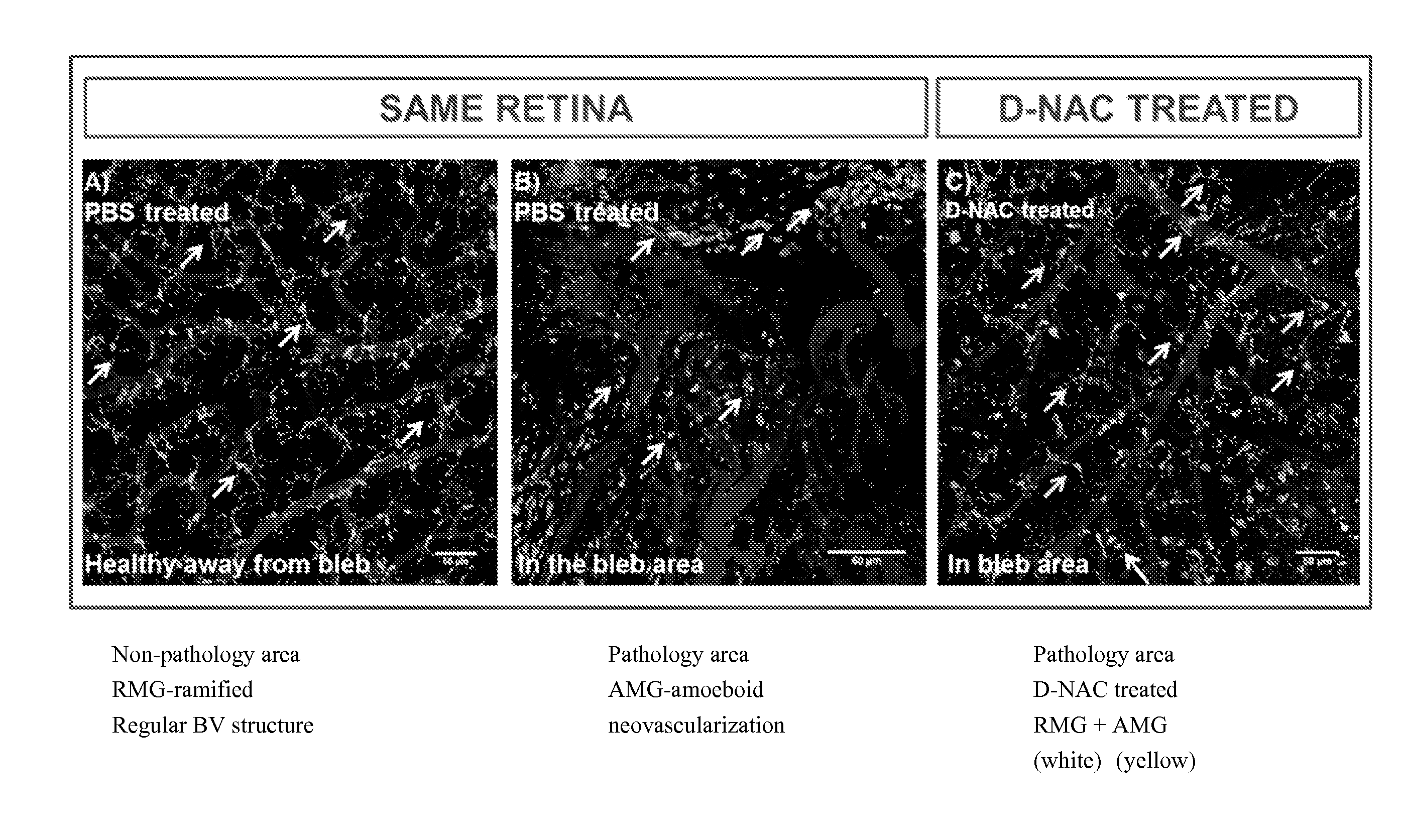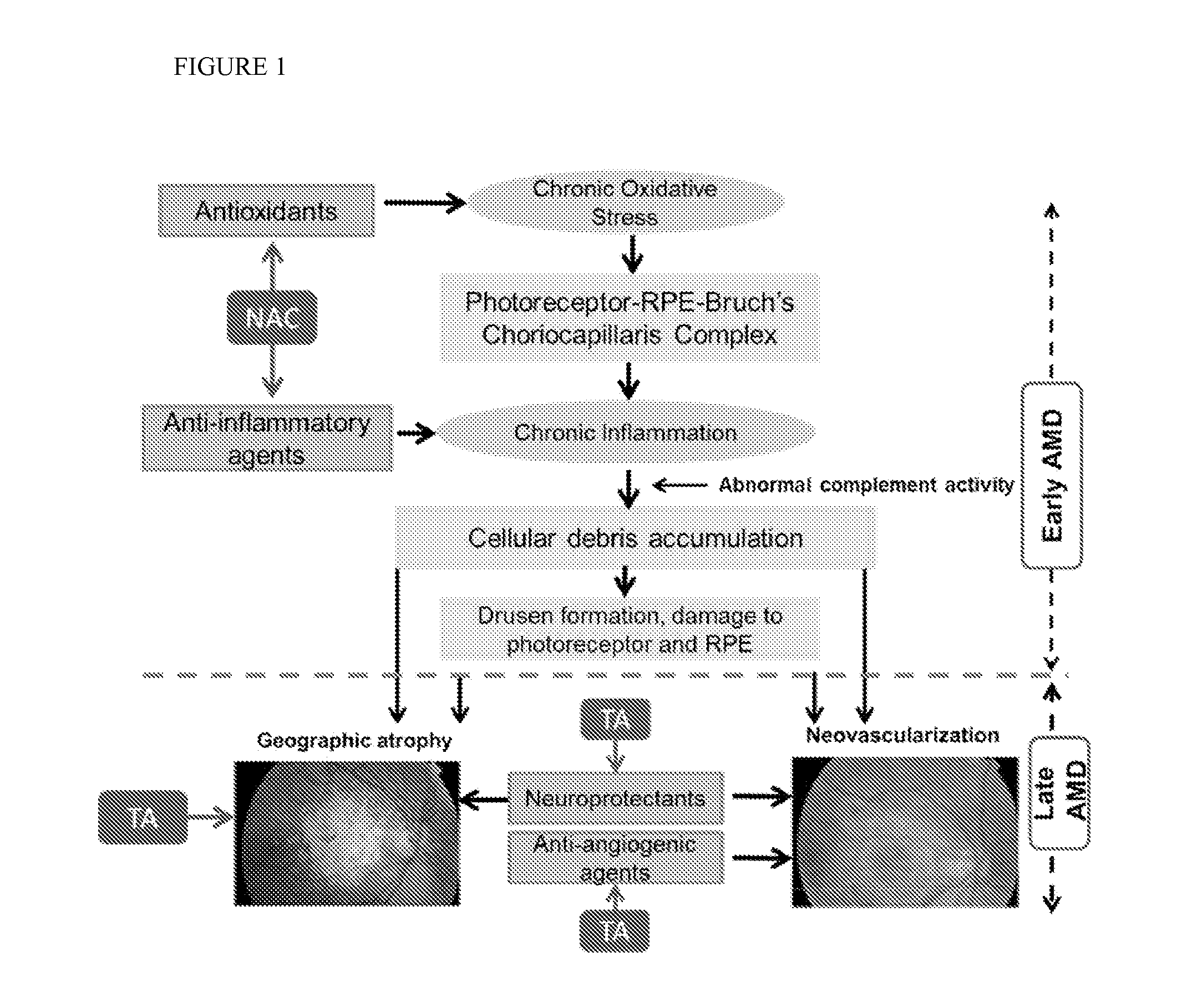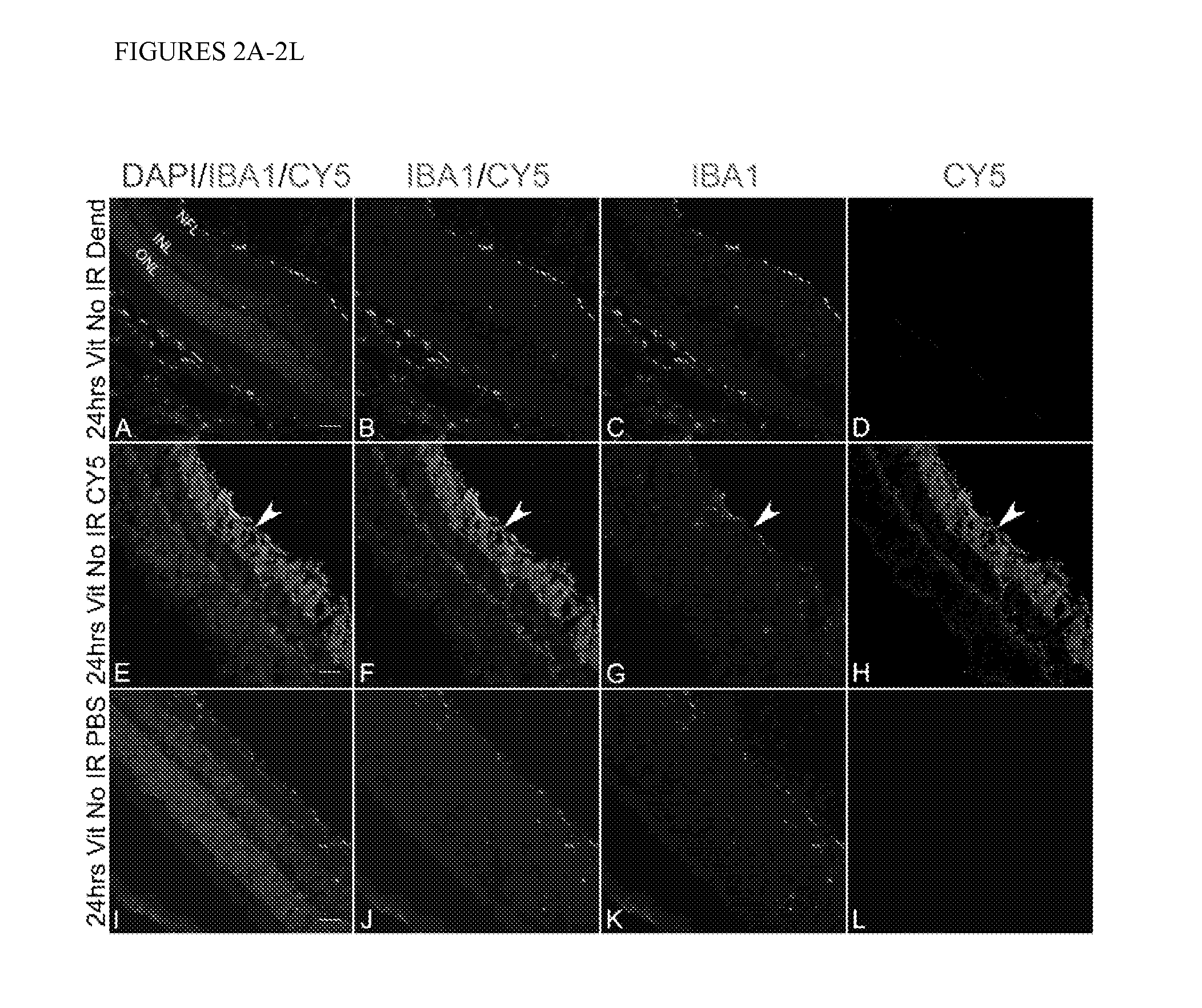Dendrimer compositions and their use in treatment of diseases of the eye
- Summary
- Abstract
- Description
- Claims
- Application Information
AI Technical Summary
Benefits of technology
Problems solved by technology
Method used
Image
Examples
example 1
[0104]Characterization of D-Cy5 conjugates. Ethylenediamine-core poly-(amidoamine) [PAMAM] hydroxyl-terminated generation-4 (G4-OH) were labeled with near IR fluorescent dye Cy5 as we reported previously (Molecular Pharmaceutics. 2013; 10:4560-71; Biomaterials. 2012; 33:979-88). Briefly, G4-OH was partially functionalized by 6-amino caproic acid using FMOC protection / deprotection chemistry resulting in bifunctional dendrimers with ˜5-6 NH2 groups on their surface. The resulting bifunctional dendrimers with reactive amine groups were reacted with N-hydroxysuccinimide monoester Cy5 dye to obtain the D-Cy5 conjugate. The resulting conjugates were purified using dialysis and GPC (gel permeation chromatgraphy) and characterized using 1H NMR (FIGS. 11-13).
[0105]The HPLC chromatogram of bifunctional dendrimer showed elution time of 14.84 min from the column which differed from the elution time of G4-OH dendrimer (elution time 14.42 min) (FIGS. 16A-16B). This indicates formation of a new co...
example 2
[0106]Ischemia-Reperfusion: Differences in microglial / macrophage population, morphology and retinal structural changes. Iba-1+ resident microglia / macrophages in normal retina were less in number and had ramified morphology with distinctive dendrites. The heterogeneous populations of microglial cells were predominately found in choroid and inner nuclear layer (INL) and very few of them were observed in the outer plexiform layer (OPL)(FIGS. 2A-D; 2I-L). The retinas had a normal lamination after intravitreal injection (FIG. 2). I / R injury led to a structurally damaged retina and marked activation of microglia in the retina and choroid, based on a change from dendritic to round or fusiform morphology. At six days post IR, the retinal microglial / macrophages were activated and increased in number and distributed in all retinal layers: inner plexiform layer (IPL), INL, outer nuclear layer (ONL) and the subretinal space (FIGS. 3A-D). Interestingly, we found decreased numbers of choroidal mi...
example 3
[0107]Retinal biodistribution of D-Cy5 upon intravitreal & intravenous administration: Intravitreal Administration. Intravitreal administration of D-Cy5 showed differential biodistribution between normal and I / R retinas. In normal retinas at 24 hours post intravitreal injection of D-Cy5, there was very minimal fluorescence in retina and choroid (FIGS. 2A-D). There was no fluorescence signal from D-Cy5 after 24 hours suggesting that dendrimers were cleared completely from retina. On the contrary, free Cy5 remained in inner retina at 24 hours post injection (FIGS. 2D-F). This suggests that D-Cy5 is cleared rapidly from intact retina. In I / R-injured retinas, we observed significant fluorescence signal from D-Cy5 in retinal sections at 24 hours post-injection (FIGS. 3A-H). Dendrimers (D-Cy5) were observed in Iba-1+ microglia / macrophages in the subretinal space, ONL, INL and in the vicinity of internal limiting membrane (ILM) of retina. We have also observed dendrimer in vitreous and loc...
PUM
| Property | Measurement | Unit |
|---|---|---|
| Time | aaaaa | aaaaa |
Abstract
Description
Claims
Application Information
 Login to View More
Login to View More - R&D
- Intellectual Property
- Life Sciences
- Materials
- Tech Scout
- Unparalleled Data Quality
- Higher Quality Content
- 60% Fewer Hallucinations
Browse by: Latest US Patents, China's latest patents, Technical Efficacy Thesaurus, Application Domain, Technology Topic, Popular Technical Reports.
© 2025 PatSnap. All rights reserved.Legal|Privacy policy|Modern Slavery Act Transparency Statement|Sitemap|About US| Contact US: help@patsnap.com



